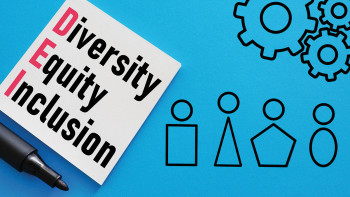
Time to move from hackneyed ways to modern ones; fast
Whatever be our age, many of us are haunted by romantic songs about love and heartbreak. The pain of separation has to be experienced to be described. Wrenching away oneself from a fond past, which once used to be your present, can indeed be painful. Intimate memories remain engraved on the heart that bleeds. The ups and downs in personal life are not too different from the travails in our corporate experience. The need to part ways from the past and venture on a new path is integral to life, both on the personal and business fronts. One has to move on for sheer survival and much needed transformation.Enter unlearning
Unlike poetry, unlearning in the business and corporate world is not about merely forgetting the past. That will create a vacuum. Companies need to promote and learn new skills to keep up with the needs of a volatile business environment. However, as the business and corporate world has been realising over the last decade and a half since the emergence of unlearning, its execution is easier said than done. We have focused too long on the learning organisation. Unlearning to carve out a new path has, therefore, become that much more difficult. Victims of heartbreaks know how tough it is to find a new purpose and way in the world. Companies and their rank and file too tend to fall in love with their set ways over a period in time. They take pride in their work style. It is almost like age-old customs in different social groups. Any change or reform rattles the society and protest follows. Companies and their employees too are part of a social system and are wary of changes. So, the reaction to new things is likely to be the same. Herein the role of top management assumes significance. The needs of a networked economy can be met only with exponential changes. Gradual and incremental changes cannot take you far. By the time you give up some old work habits and acquire new ones, the new would have become obsolete. Hence the need for rapid change and distancing from mental models which served well earlier but are no longer adequately effective now. This does not mean abandoning all old skills lock, stock and barrel; rather you have to pick and choose with discretion and add new skills and knowledge to your portfolio. Needless to say, this should become a regular process. Among companies who broke limits and opted for exponential growth are the likes of Google, Apple, Uber, Netflix, Airbnb and Facebook, envied by the corporate world.How can we facilitate unlearning?
The top management, particularly in family-run organisations, needs to recognise and display that the existing mental model is no longer effective. This will spur others in the organisation to at least look into the deficiencies in the old system. They will no longer be afraid of abandoning old practices. Rather, they will become more curious about the new system and also offer suggestions, making the organisation less hierarchical in decision-making. This buy-in by the rank and file is the first step towards the success of unlearning. This done, you should obviously create and present a business model which is better aligned to the realities faced by your company and the segment in which it is housed. Social media can play a vital role in this respect. It is not a mere channel for message distribution. Management experts advise that social media be viewed and used as a tool for communication from many to many; the one-to-many model of social media is falling apart. Beware of the tendency of slipping back to the comfort zone of old practices viewed mostly among employees who have been with you for a long time. Usually, they are most resistant to change. After all, starting things afresh is strenuous and distancing from the past is painful. The past, imperceptibly, becomes one’s real psyche and persona, giving up which hurts in more ways than one. Management practitioners and researchers have figured out several unlearning facilitators like using collaborative language, prompting employees to adopt small but mind-set altering measures like switching off electric equipment, laptops, etc., changing locations and increasing diversity in teams to foster cross-fertilisation of ideas among persons with different backgrounds and skill sets, encouraging child-like curiosity among employees, providing constant hand holding and course correction. By following the above measures in earnest, the management can minimise not only its own but also the employees’ sense of loss caused by the abandoning of old and obsolete models. Present them a new love in return. READ ALSO:
Published Date: July 2, 2022, 12:00 am
Post Comment
E-Magazine
RELATED Business Sutra





